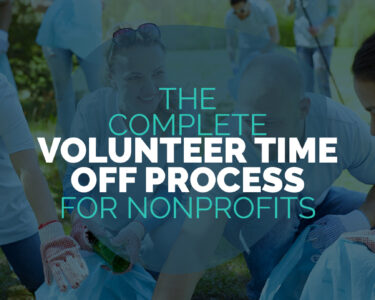In the following conversation, Natalia Kiryttopoulou, lead for global assessment and advisory services at CEP, discusses just-released research on European foundation practices with Sevda Kilicalp, head of research and learning at Philea (Philanthropy Europe Association).
Natalia: Sevda, this is not the first time you and I have discussed the findings of CEP’s new report, “Partnering for Progress: Grantee Recommendations for Europe-Based Funders,” since you’ve been involved as an advisor on the project. The report is based on an analysis of more than 5,000 grantee responses providing feedback on European funders as part of CEP’s Grantee Perception Report.
Now that the report is out, though, I’m eager to get your thoughts about some of the implications of the findings. What are the key points that stand out for you?
Sevda: First of all, this is probably the largest data set that captures how grantees feel about their European funders. Until now, we largely relied on U.S.-based research or anecdotal insights from Europe, so we finally have Europe specific data to back up the case for change. This is really important, not only for researchers who have been really waiting for this kind of validation, but also for philanthropy professionals looking for evidence to convince their boards.
In terms of what stood out for me, the feedback from grantees is not shocking. Grantees want what they have always wanted — stronger, more intentional relationships, simpler application and reporting processes, more flexible funding, and support that goes beyond the grant.
But what I find most striking is that this is very consistent with the grantee experiences in other parts of the world, including on the other side of the Atlantic. So, despite different funding cultures and environments, grantees across regions report facing many of the same challenges, expressing similar needs. This really underlines that pressures and expectations funders are navigating or facing are not unique to one region.
In fact, this kind of a shared experience presents a powerful opportunity for funders in different regions to learn from each other. The strategies, of course, must be grounded in the local context, as funders everywhere are being asked to build more trust-based, equitable relationships with the organizations they support, but I think it’s important to recognize the opportunity for funders to engage in mutual learning and reflection together.
Natalia: When I discuss our Grantee Perception Report benchmark with funders in Europe, I very often get asked: “Well, can we really be compared to funders from the U.S. or elsewhere? Isn’t our context and culture just too different?” I have to say that it was not too surprising to me that the analysis carried out by our Research team did not show significant, consistent differences between the two groups.
Having said that, they did find some slight differences. For example, the findings suggest that European foundations’ funding practices are more demanding to grantees than those of U.S. funders. In the analysis, we saw a different distribution of process hours between grantees of European and U.S. funders, with the former reporting spending at the median 55 hours on funder requirements and the latter spending 25 hours.

Why do you think that is?
Sevda: I can think of a number of explanations. First, this may be partly reflective of broader administrative and institutional cultures across the continent. A strong emphasis on process, compliance, and risk management is common, not only within philanthropy but across many sectors. We often hear that Europe lags behind in terms of innovation and adaptability when compared to regions with more agile institutional cultures. These traditions can contribute to more structured, and at times longer, procedures.
Natalia: That is interesting, Sevda. Another hypothesis, I think, is about a potential difference in approaches, with ‘strategic’ funders being more demanding on processes and data requirements and ‘trust-based’ ones having simpler processes. Not that I think that strategic and trust-based are antagonistic concepts, but do you think there is some of that in there too?
Sevda: The concept of trust-based philanthropy is by no means confined to one geography; it has existed in various forms globally for decades. However, the mainstream discourse around trust-based approaches gained a lot of traction in Europe during the COVID-19 pandemic. In contrast, the United States saw broader adoption and discussion of these principles earlier and more extensively.
Finally, infrastructure plays a key role. In the U.S., platforms like Candid, and TechSoup enable funders to access standardized due diligence information and avoid repeatedly requesting the same details from grantees. This shared infrastructure streamlines processes and reduces administrative load. In Europe, such a continent-wide infrastructure is currently lacking, although there are promising efforts underway — such as initiatives by Humentum to develop reporting standards and common frameworks — that aim to close this gap.
Natalia: Let’s talk about another — very closely related — piece of feedback grantees had for their Europe-based funders that’s highlighted in the report: unrestricted funding. In the dataset that CEP analysed, among Europe-based funders just 18 percent of grantees report that their grant was unrestricted — compared with 31 percent of grantees of U.S.-based funders. And this is, of course, a recurrent ask by grantees in their comments to funders.
Sevda: You know, this really gets to the heart of something we see across the sector. Unrestricted funding — or “no-strings” funding as some call it — is widely recognized as one of the most effective forms of support you can give, yet it’s still surprisingly rare. And honestly, I think there are some deep-seated reasons why funders struggle with this, even when they know it works.
A lot of it comes down to control. Many funders just aren’t comfortable letting go of the reins. There’s this persistent worry that without strict guidelines and oversight, organizations might misuse the money or become too dependent. These assumptions keep floating around despite plenty of research showing they’re just not true.
But it’s more than that — unrestricted funding really shifts the power dynamic. It puts decision-making in the hands of the nonprofit organizations, and for some funders, that challenges how they see their role. I think there are these unconscious beliefs at play, like “only credentialed experts can spend money wisely” or “giving people cash will lead to complacency.”
What’s fascinating to me is that these same funders might be perfectly comfortable taking financial risks in the market, but when it comes to philanthropic capital, especially unrestricted giving, suddenly everything feels “too risky.” And then there’s the institutional pressure — even when funders intellectually get that trust-based approaches work better, they’re often hesitant because their boards, their peers, or their organizations still prefer the familiar, structured, measurable ways of doing things.
Natalia: So, what can funders do differently? Change is notoriously slow when it comes to shifting philanthropic practice, but do you see signs of that change happening in Europe?
Why is the progress so slow? And what will help make real change?
Sevda: We are seeing a shift happening, but you’re right — it’s frustratingly slow. More funders are starting to recognize that the people closest to the issues are actually best positioned to define both the problems and the solutions.
But here’s the thing — the slow pace isn’t because we lack evidence or because grantees aren’t asking for it. The case for flexible, unrestricted funding has never been clearer. The real reason change is so incremental is because this isn’t just a technical shift, it’s cultural, it’s political, and fundamentally, it’s about power.
Trust-based philanthropy challenges funders to listen more and dictate less, to build real relationships based on mutual respect. But to really embrace this approach, the sector needs to go deeper and honestly reckon with equity.
And I don’t mean equity as a nice-to-have or side conversation — it’s the foundation of everything. It requires an honest look at who gets to set priorities, who decides what success looks like, and who’s accountable to whom. For real change to happen, funders need to do the internal work. They need to examine their own discomfort with letting go of control and really explore their relationship with money and power.
Learning journeys that help donors understand how their wealth connects to historical and social contexts can be transformative. When you frame it through an equity lens, it becomes a moral imperative — understanding how wealth has often been accumulated through systems of exclusion makes unrestricted giving not just effective, but the right thing to do.
Natalia: Thank you, Sevda, I really appreciate your points about equity and think this really sets a compass for our sector. If I may, I would also add a sense of urgency to it, given the rapidly changing geopolitical landscape, significant cuts in funding and shrinking civic space on both sides of the Atlantic.
Sevda: I couldn’t agree more.
Natalia: Thank you, Sevda, for your contributions to the report and for this wonderful conversation. I guess we all have some homework to do to keep advancing philanthropic practice in Europe and beyond.
Natalia Kiryttopoulou is the lead, Global Assessment and Advisory Services, at CEP. Sevda Kilicalp, Ph.D. is the head of research and learning at the Philanthropy Europe Association (Philea).
👇Follow more 👇
👉 bdphone.com
👉 ultractivation.com
👉 trainingreferral.com
👉 shaplafood.com
👉 bangladeshi.help
👉 www.forexdhaka.com
👉 uncommunication.com
👉 ultra-sim.com
👉 forexdhaka.com
👉 ultrafxfund.com
👉 bdphoneonline.com
👉 dailyadvice.us




